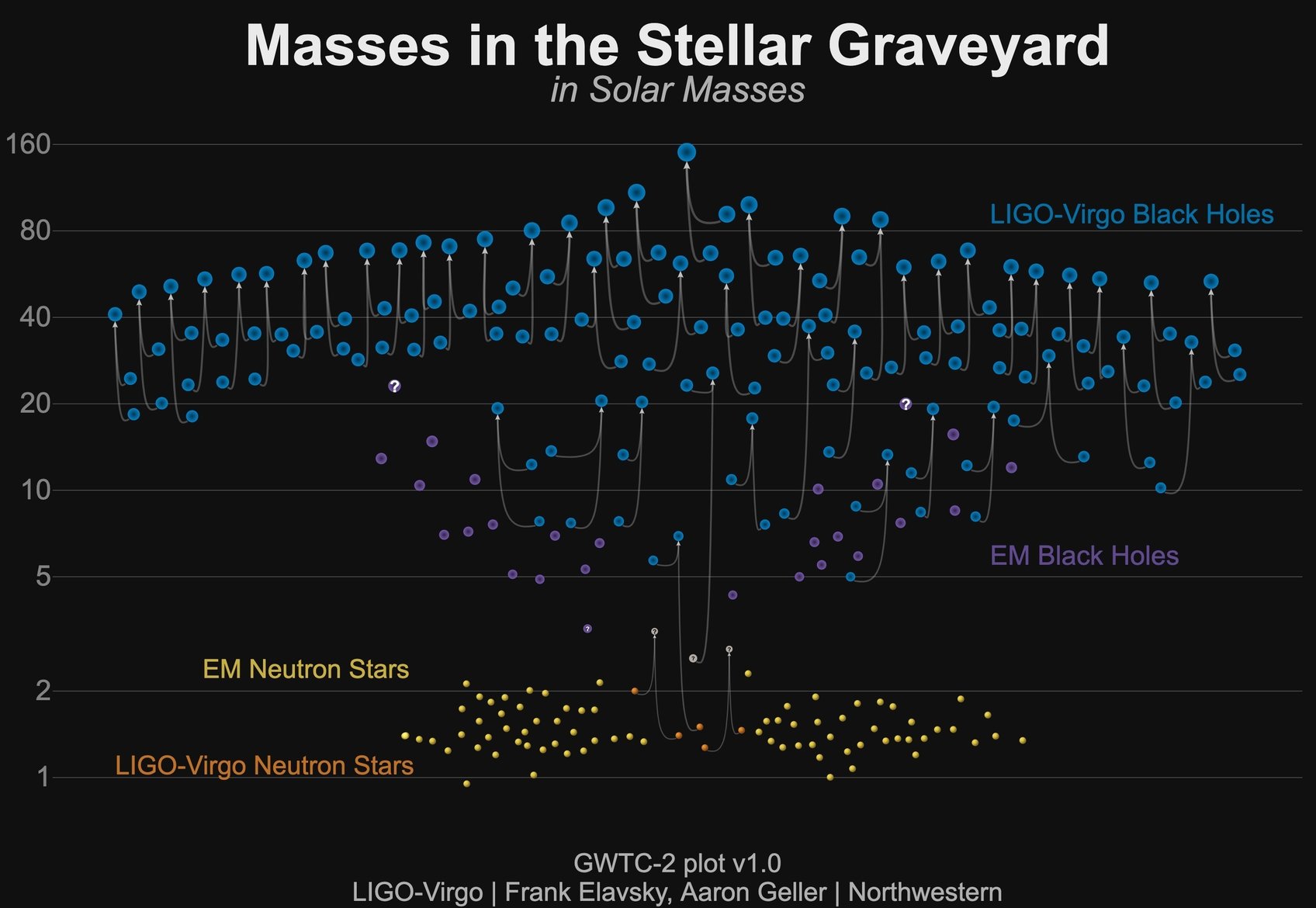My work lies primarily at the intersection of dark matter and black holes, which I study using machine learning, computational/numerical methods, and other techniques from across cosmology, astrophysics, and particle physics. I invite you to read about some of my projects below!
Completed Projects
Dark Black Hole in the Mass Gap

The momentous discovery of gravitational waves by LIGO/Virgo has ushered in a new era in astrophysics! One of the most shocking findings has been the detection of black holes with masses that are incompatible with the standard picture of stellar evolution. By modeling the evolution of "dark" stars, we showed in this paper that a dark electromagnetism sector allows for a novel formation mechanism for black holes in this otherwise forbidden mass range. We accomplished this by numerically solving for the equation of state, semi-analytically calculating the collapse of these dark stars, and validating our results using state-of-the-art stellar evolution code.
Baryogenesis and Dark Matter from Tiny Black Holes

Why is everything made up of matter rather than antimatter (particles identical to regular matter, but with opposite charge)? This is one of the most puzzling questions in modern physics. One possibility, which we explore in this paper, is that tiny black holes preferentially create more matter than antimatter. We demonstrate that this scenario can not only account for the matter/antimatter asymmetry in the universe, but also explain the dark matter abundance.
Microlensing Searches for Primordial Black Holes

Here's a link to my recent paper on the prospect that primordial black holes (PBHs) comprise a significant fraction of the dark matter. One method of searching for PBHs is microlensing, a process in which the gravity of a black hole acts as a magnifying glass and focuses the light of a background star. By properly accounting for systematics in microlensing searches, we showed that previous constraints on these objects are invalid for PBHs below a certain mass, opening the possibility that asteroid-mass PBHs make up 100% of the dark matter!
Optimal Observing Strategies for Velocity-Suppressed Dark Matter
One might think that the best place to look for dark matter annihilating with itself is at the very center of galaxies, where the density is highest. However, when the dominant contribution to annihilation is velocity dependent, our intuition fails us. We show in this paper that depending on the gamma-ray background, the optimal observation strategy may be to completely ignore the center of galaxies, and look at their perimiter instead!